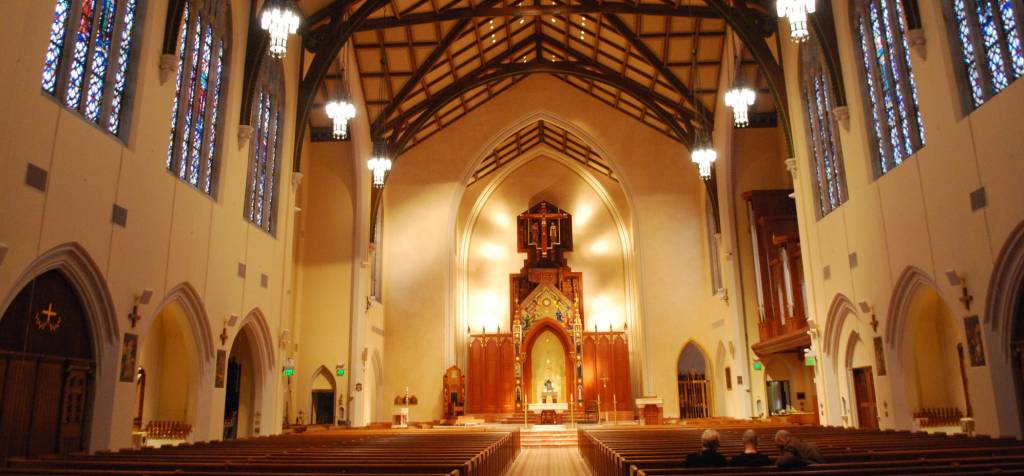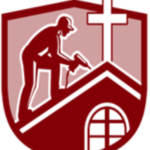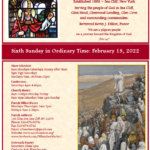
The sexual abuse of any human being—and particularly the sexual abuse of children—is a terrible sin and a crime. It should not happen anywhere, and it most particularly should not happen in the Catholic Church. The fact that it did—and on such a significant scale—is disgraceful and the Bishop is committed to removing any remaining abusers and keeping out future ones.
Although it does not excuse the crimes, sins and failures of the past, since 2002, the dioceses of Pennsylvania and elsewhere have put into place programs to prevent the abuse of children and make sure that cases of abuse are properly reported. Bishop Barres became bishop of Allentown in July 2009.
In 2002, years before Bishop Barres became bishop, Allentown opened up its files on abusers to the local district attorneys and subsequently all reports of abuse were forwarded to law enforcement. The documents given to the Pennsylvania attorney general in 2016 thus had largely been reviewed by local prosecutors over a decade previously. During Bishop Barres time in Allentown, abusers were removed from office and all reports of abuse were sent on to the appropriate prosecutors.
The 2018 Pennsylvania grand jury report contains certain statements concerning how Bishop Barres and the Diocese handled the case of a priest removed from ministry named Michael Lawrence. The Report is materially incorrect on these points, and a summary discussing the errors follows at the end of this statement.
Bishop Barres has spent many years talking to and counselling the survivors of abuse (including the survivors of abuse elsewhere in society who should not be forgotten) and is aware of how devastating it can be to survivors and their families. The independent reconciliation and compensation program of the Diocese of Rockville Centre (modelled after Cardinal Dolan’s example in the Archdiocese of New York) is designed to help survivors of abuse in their recovery processes.
Errors in the Report Regarding Michael Lawrence.
At pages 60-61 of the Report certain statements are made concerning how Bishop Barres handled the case of Michael Lawrence. Unfortunately there are errors in that recitation—which can be seen when the attached letter from Bishop Barres to the Congregation for the Doctrine of the Faith (“CDF”) is read.
1. Bishop Barres and the Diocese of Allentown informed the Holy See of all relevant facts about Lawrence.
The Report says that it appears that Bishop Barres never told the CDF about Lawrence’s first accuser. It misreads the very letter it cites.
Lawrence was removed from ministry long before Bishop Barres arrived in Allentown, and had been sent to live in a secure and carefully monitored rural facility for sex offenders. The Diocese of Allentown sought to have Lawrence removed from the clerical state by the Holy See, and sent a report on his conduct to the Congregation for the Doctrine of the Faith (the “CDF”), which is the appropriate congregation in Rome. That report was supplemented by additional material when a second victim also reported abuse.
The letter cited in the Report is reproduced on pages 63-64 of the Report. As can be seen can see, the very first paragraph of the letter makes clear that there had been prior allegations that had previously been discussed. It refers to “the more recent allegations made against” Lawrence (hence necessarily implying that there were prior allegations). The second paragraph then refers to the “additional accusations which were made against him and communicated to the [CDF] on 22 September 2011,” and then refers to a 2008 psychological report on Lawrence and explicitly notes that the psychological report was made “three years before the new allegation was reported.”
In other words, the letter is just one part of the of correspondence between the Diocese of Allentown and the CDF; the entire situation was set forth in the earlier correspondence, and this final letter both refers to the prior correspondence and shows that Rome had been told about both victims.
2. Lawrence was removed from ministry. He ultimately was not removed from the clerical state to ensure he would stay in a secured facility far from children.
Some have read the Report to suggest that Lawrence remained in ministry. That is incorrect. He had been removed from ministry long before Bishop Barres came to Allentown and was kept in a secure facility for sex abusers. Initially Bishop Barres asked the Holy See to remove Lawrence from the “clerical state.” (What is sometimes called being “defrocked”). However, as the letter itself notes, Bishop Barres and the Diocese decided to withdraw that application because they were concerned that if Lawrence was removed from the clerical state he would decide to leave the secure facility and rejoin society. As the letter shows, Bishop Barres concluded that it was better for Lawrence to continue in this “supervised’ way of life” at the secure facility rather than to have him re-enter society. Lawrence died a few months later.
Bishop Barres stands by this decision. Although he did not know Lawrence personally, his advisors who knew Lawrence unanimously thought Lawrence might present a danger to children if he was not kept at the secure facility and all therefore concluded that keeping him at the secure facility was the highest priority.
3. Bishop Barres is in the process of requesting the Pennsylvania Attorney General’s office correct its report on these subjects.









Speak Your Mind